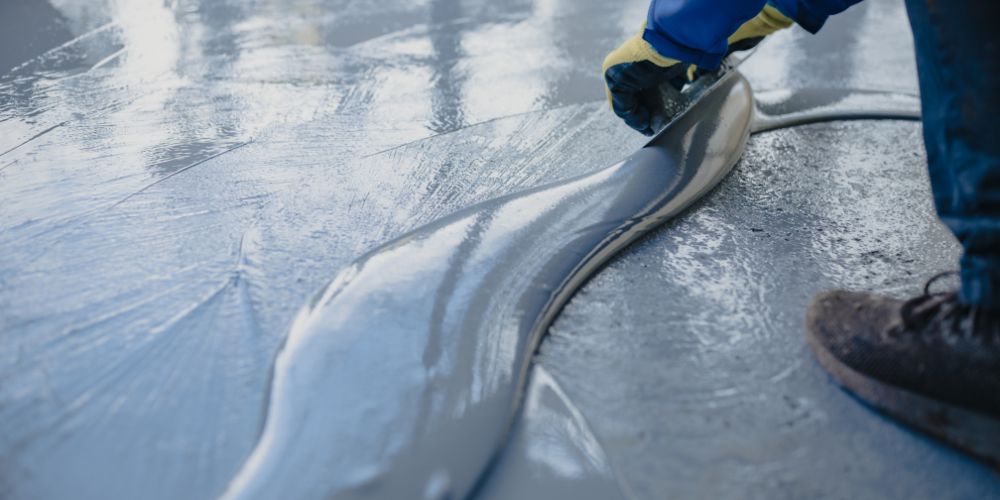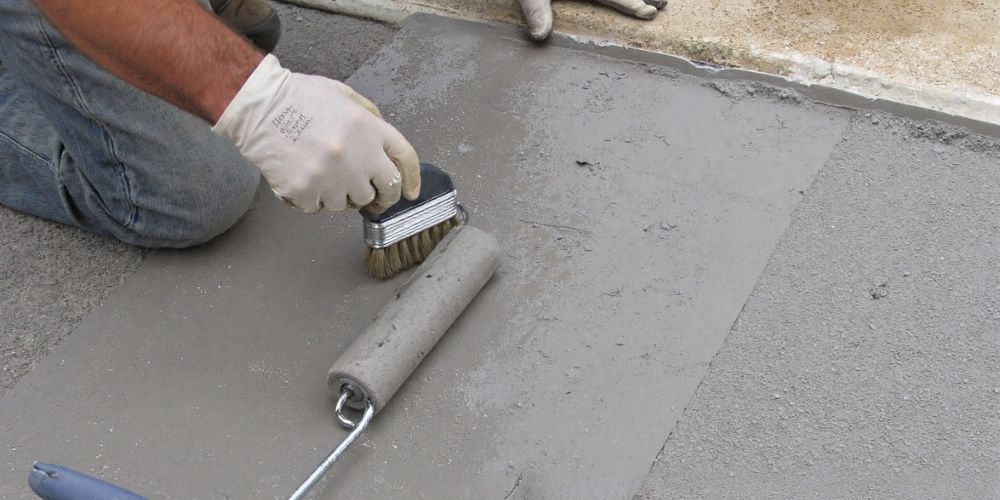Thinking of giving your pool deck a makeover? One question homeowners often ask is: “Is epoxy a good choice for pool decks?” Well, grab a cold drink and stick around — we’re diving into everything you need to know about epoxy pool deck resurfacing. From the pros and cons to how it stacks up against other options (and even some handy tips), this guide will help you decide whether epoxy deserves a spot in your backyard.
What Exactly Is Epoxy Pool Deck Resurfacing?
In simple terms, epoxy pool deck resurfacing means applying a durable epoxy coating over an existing concrete pool deck. If your old concrete is looking tired, cracked, or just plain blah, epoxy can breathe new life into it.
Think of it as giving your pool deck a fresh coat of armor; it resists water, stains, and cracking, while also upgrading the look. When done right, the result is a sleek, modern finish that lasts for years (and saves you from side-eyeing your deck every summer).
Also Read: Everything You Need to Know About Epoxy Flooring
The Pros of Using Epoxy for Pool Decks

So, is epoxy worth it? Here’s why many pool owners say yes:
- Durability that lasts: Epoxy stands up to heavy foot traffic, cannonball splashes, and endless pool parties.
- Water-resistant magic: Since water and pool decks go hand-in-hand, it’s good to know epoxy shrugs off moisture like a pro.
- Easy to clean: A smooth, non-porous surface means dirt and spills don’t stick around for long.
- Instant glow-up: That shiny, polished finish can instantly upgrade your outdoor space.
- Budget-friendly: Compared to ripping out and replacing your whole deck, epoxy is a cost-effective way to transform your poolside.
The Cons of Epoxy on Pool Decks
Of course, no material is perfect. Here are a few downsides to keep in mind:
- Slippery when wet: Unless you add texture or a non-slip finish, your pool deck could double as a skating rink.
- Sun sensitivity: Without UV protection, epoxy can yellow or fade over time.
- Patience required: You’ll need to let it cure for a few days, so no pool parties right after installation.
- Prep is everything: If the surface isn’t cleaned and prepped properly, the epoxy may peel (and nobody wants that).
Epoxy vs. Other Pool Deck Coatings
Not sure if epoxy is the one? Let’s compare it with some other popular choices:
Epoxy vs. Acrylic Coatings
- Epoxy: Thicker, tougher, and built to last.
- Acrylic: Lighter, comes in more colors and textures, but not as durable.
Basically, if durability is your top priority, go epoxy. If you’re chasing style options, acrylic may suit you better.
Epoxy vs. Stamped Concrete
- Stamped Concrete: Great for fancy stone-like designs, but it’s prone to cracking and needs regular sealing.
- Epoxy: Less maintenance, better water resistance, and more durable in poolside conditions.
Epoxy vs. Polyaspartic/Polyurea
- Polyaspartic & Polyurea: Cure super fast, resist UV damage, and are extremely durable — but they come with a higher price tag and trickier installation.
- Epoxy: More affordable and still strong enough for most homeowners.
Also Read: Polyaspartic vs Epoxy Floor Coatings
So if you want the Bentley of pool deck coatings, go polyurea. If you’d rather stick with a reliable (and more affordable) Toyota that still gets the job done, epoxy’s your guy.
When Epoxy Is the Right Choice for Your Pool Deck
Epoxy might be your best bet if:
- Your deck is still structurally solid, just looking a bit dull
- You want a strong, waterproof finish
- You’d like to avoid the high cost of a full replacement
- You’re okay waiting a few days for it to cure
If you’re nodding along, epoxy pool deck resurfacing could be the perfect upgrade.
How to Apply Epoxy Coating on a Pool Deck

Thinking of a DIY project? Here’s the general process (though hiring a pro usually guarantees a better finish):
- Clean the deck: Remove all dirt, stains, and any old coatings.
- Repair cracks and holes: Fill them in for an even surface.
- Etch the surface: Helps the epoxy stick like glue.
- Prime the deck: Prepares it for the main coating.
- Mix and apply epoxy: Follow the instructions carefully.
- Let it cure: Patience is key — no pool use until it’s fully dry.
Keeping Your Epoxy Pool Deck Looking Fresh
Maintenance is pretty easy:
- Sweep or rinse it regularly
- Clean up spills right away
- Avoid dragging heavy furniture across it
- Add a topcoat every few years for extra shine and protection
With just a little care, your epoxy pool deck can look amazing year after year.
FAQs About Epoxy Pool Deck Resurfacing
Can epoxy handle poolside moisture?
Absolutely — that’s one of its main perks.
Will epoxy crack in the sun?
Not if you add UV protection. But over time, sunlight can still wear it down a bit.
How long does epoxy last on a pool deck?
Typically, 5–10 years with proper maintenance.
Is epoxy hot to walk on?
It can be in direct sunlight. Choosing lighter colors and textured finishes helps.
What does it cost to epoxy a pool deck?
Depends on size, prep work, and design, but it’s usually much cheaper than a full deck replacement.
Conclusion
So, is epoxy a good choice for pool decks? In most cases, yes. It’s tough, waterproof, attractive, and easy on the wallet compared to a full replacement. With the right prep and a little maintenance, your pool deck can stay stylish and sturdy for years.
And if you’re ready to give your pool deck the upgrade it deserves, Bold Choice Coatings has the expertise and high-quality materials to get the job done right. Let us help you create a poolside space that’s as durable as it is beautiful.

